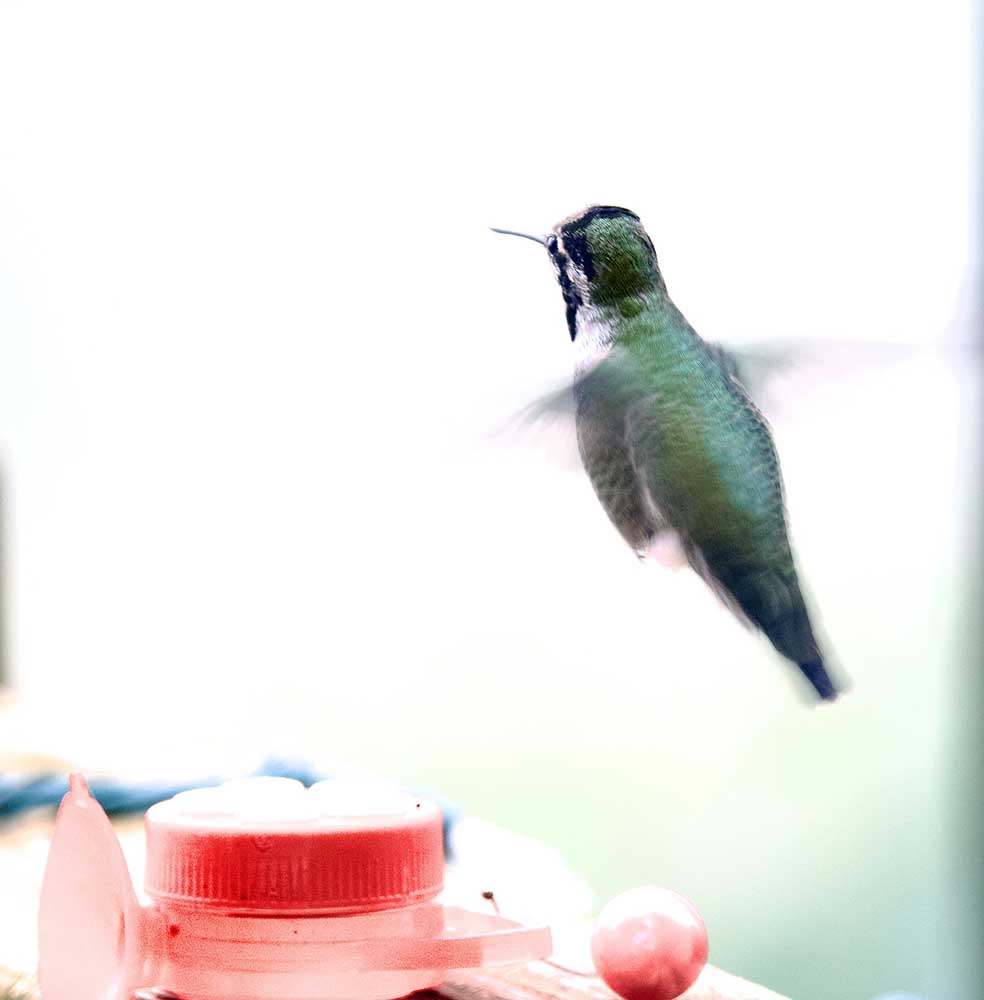Breaking news: The hummingbird eggs have hatched!
Published 10:02 am Thursday, March 31, 2022

- This Anna’s hummingbird has her own personal nectar source. It seems perfect for her!
Fantastic news regarding the Anna’s hummingbird that is nesting on the Peninsula. The eggs have hatched! As far as we know the nesting season began for the Anna’s around Feb. 25. The incubation period takes anywhere from 14 to 16 days. Once her two white eggs hatch, the mama will feed the babies for about three weeks which is about the time it takes for the young to be ready to fledge. The female will continue to feed the babies for a short time after fledging.
Trending
This may be a good time to look around your yard for a nesting Anna’s hummingbird. The nest is generally attached to the thinner twigs of a tree or vine anywhere from six to twenty feet high. Nesting material consists of plants, spider webs, hair, feathers with moss and or lichen decorating the outside.
The tiny Anna’s hummingbird weighs about as much as a five-cent piece and is the size of a ping pong ball and is known to have up to three broods a year, according to Cornell Ornithological Lab. So, we could keep on looking for a nesting pair. It would be an amazing find!
Comparatively speaking, the rufous hummingbird also nests in the Pacific Northwest, but only raises one brood and it happens during our summer months. Like the Anna’s, the female bird constructs the nest. The rufous hummingbird prefers to nest in open areas, shrubby spots, yards, parks, swamps, and forests. Their favorite trees for nesting in the Pacific Northwest include Sitka spruce, hemlock, pine, and Douglas-fir. They use similar materials to those that the Anna’s uses including spider webs, feathers, lichens, and plant material. Nests are usually located about 30 feet up and are often hidden behind a drooping branch.
Trending
The rufous hummingbird lays two or three white eggs and only has one brood per nesting season. Incubation lasts anywhere from 15 to 17 days, while the nestling stage is 15 to 19 days.
The male rufous is a brilliant orange, while the female is less brilliant in color, it still wears a green and orangey dress. This species of hummingbird is feisty and aggressive toward other hummers trying to get nectar from their chosen sources. Both species of hummingbirds will also take insects that have been trapped in the sap of the holes made by woodpeckers such as the red-breasted sapsucker. Insects are an important source of protein for the nestlings.
Hear ye! Hear ye! The Anna’s hummingbird birds have hatched. Look for them in nearby trees or vines that grow in open areas, woodlands, or coastal scrub or in any of your backyard trees or vines. Happy birding!









